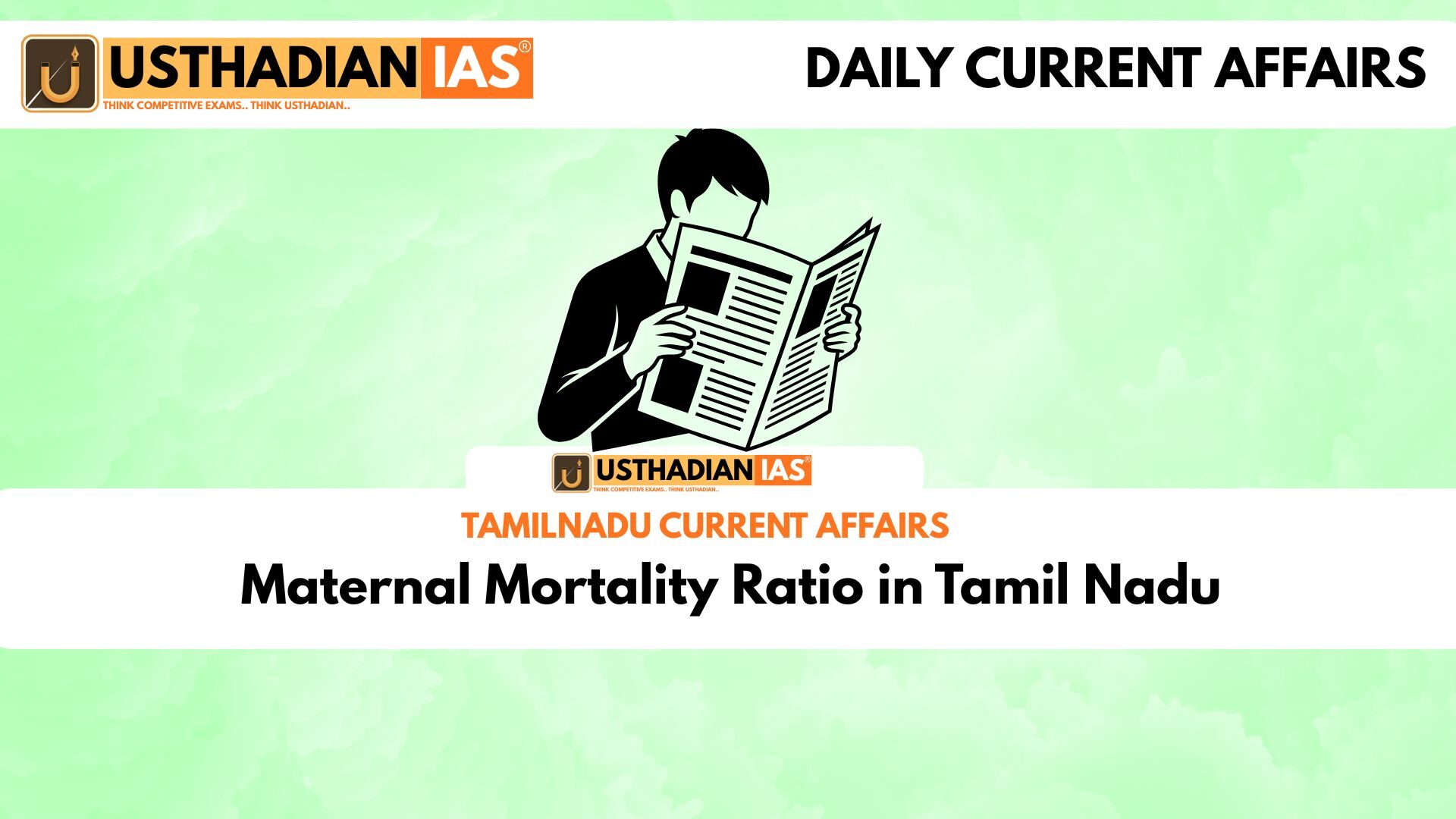Recent decline in Tamil Nadu
Maternal Mortality Ratio in Tamil Nadu: Tamil Nadu has seen a consistent decline in its Maternal Mortality Ratio (MMR), moving from 38 to 35 per 100,000 live births between 2021 and 2023. This improvement highlights the state’s strong healthcare interventions and targeted maternal care programs.
Comparison with other states
Tamil Nadu now stands as the second-lowest in India, with only Kerala and Andhra Pradesh recording a lower MMR of 30 per 100,000 live births. The achievement reinforces Tamil Nadu’s position among the leading states in maternal healthcare.
Static GK fact: The World Health Organization (WHO) defines maternal mortality ratio as the number of maternal deaths per 100,000 live births, a key indicator of healthcare quality.
National scenario
At the national level, the MMR stands at 88 per 100,000 live births, as reported in the Special Bulletin on Maternal Mortality in India 2021–2023. This shows that Tamil Nadu and other southern states have performed far better than the national average, reflecting regional disparities in healthcare delivery.
Static GK fact: India aims to reduce MMR to below 70 per 100,000 live births by 2030 as part of the Sustainable Development Goals (SDGs).
Fluctuations in state data
Interestingly, the latest data for 2023–2024 from the Tamil Nadu Health Department places the MMR at 45.5, a rise compared to the previous period. This indicates the need for continued vigilance, particularly in rural and underserved areas. Variations in annual estimates often reflect reporting changes, healthcare disruptions, or demographic factors.
Key drivers of change
Government programs such as the Dr. Muthulakshmi Reddy Maternity Benefit Scheme, institutional deliveries, and improved referral services have been crucial. The emphasis on antenatal care, emergency obstetric facilities, and nutrition has also supported the reduction.
Static GK Tip: The Janani Suraksha Yojana (JSY) under the National Health Mission provides conditional cash transfers to encourage institutional deliveries, contributing to improved maternal health outcomes nationwide.
Challenges ahead
Despite achievements, Tamil Nadu must focus on tackling anaemia, rural health infrastructure, and postnatal care gaps. Regular monitoring and sustainable policy interventions will be essential to maintain progress and avoid reversals in MMR trends.
Static Usthadian Current Affairs Table
Maternal Mortality Ratio in Tamil Nadu:
| Topic | Detail |
| MMR Tamil Nadu 2021–2023 | Declined from 38 to 35 per 100,000 live births |
| Tamil Nadu national ranking | Second-lowest MMR in India |
| Kerala and Andhra Pradesh MMR | 30 per 100,000 live births |
| National MMR (2021–2023) | 88 per 100,000 live births |
| Tamil Nadu 2023–2024 MMR | 45.5 per 100,000 live births |
| Key state scheme | Dr. Muthulakshmi Reddy Maternity Benefit Scheme |
| National programme | Janani Suraksha Yojana under NHM |
| WHO definition | Maternal deaths per 100,000 live births |
| India’s SDG target | Reduce MMR to below 70 by 2030 |
| Main challenges | Anaemia, rural access, postnatal care gaps |








